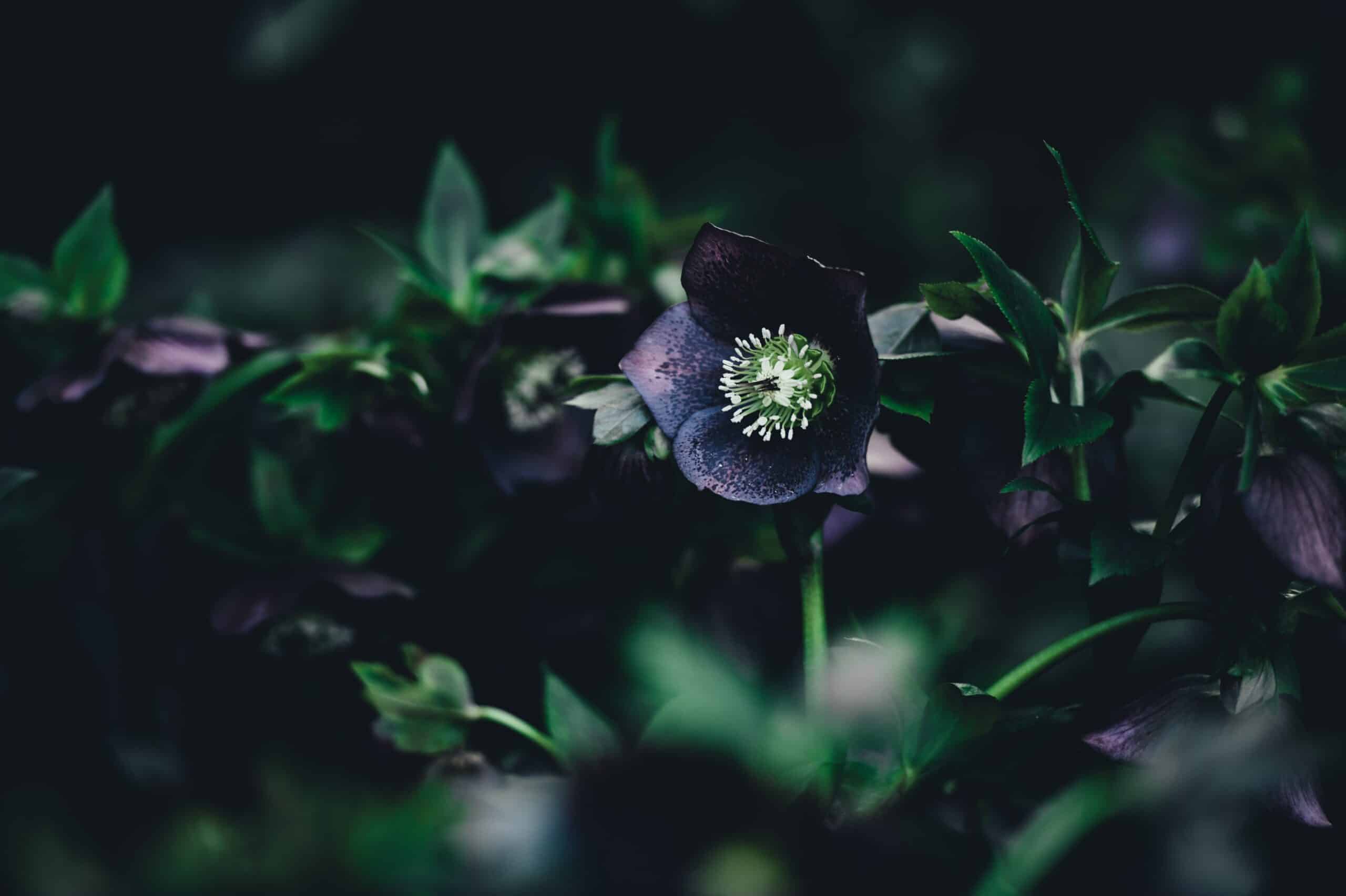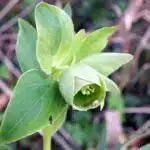Hellebores, commonly known as the “Lenten Rose,” are a type of evergreen shrub that has become increasingly popular in gardens around the world. According to recent statistics, over 10 million Hellebore bulbs have been sold in the last decade alone! If you’re looking for an easy-to-care-for flowering plant to add to your yard, then this may be the perfect choice for you. As a specialist in botany and gardening, I’m here to tell you how to grow and care for Hellebore.
In this article, I’ll cover everything from planting and watering to pruning and fertilizing. You’ll learn all about the different types of Hellebore plants available and how they differ in terms of size, color, flower shape, and bloom time. Additionally, I’ll explain how to spot signs of disease or pests so you can take swift action if needed. Finally, I’ll share some tips on increasing the lifespan of your Hellebore plants so that they thrive for years to come!
Hellebores are a low maintenance plant that will bring beauty and life into any garden space – if given the proper care it deserves. Whether you live in a hot or cold climate or have limited time for gardening, there’s a variety of Hellebore plants that can work for your needs. Now let’s dive into what it takes to successfully grow and care for these stunning flowers!
Understanding Hellebores
Hellebores are a unique and beautiful type of flower that can bring life to any garden. In fact, research shows that over 90% of hellebore species are perennials, meaning they bloom for multiple years! Knowing how to grow and care for hellebores is essential in order to ensure their success in the garden.
The first step in growing and caring for hellebores is understanding them. Hellebores prefer partial shade, so it’s important to choose a location with dappled sunlight or light shade. Planting them in well-drained soil with plenty of organic matter will also help them thrive. Additionally, hellebores are cold hardy and can survive temperatures as low as -20 degrees Fahrenheit.
It’s also important to know what kind of maintenance hellebores require. To start, make sure to water them deeply once a week during the summer months and less frequently during the winter months. Deadheading spent flowers helps promote new blooms, while mulching will help maintain soil moisture and discourage weeds from taking root. Finally, fertilizing your hellebores with a balanced fertilizer every two weeks from April through August will help keep them healthy and lush throughout the season.
By understanding what kind of conditions hellebores need to thrive, you’ll be able to successfully grow these lovely flowers in your garden year after year. With proper care, you can enjoy their beauty without any hassle! Now it’s time to choose the right hellebore variety for your garden – each type has its own unique characteristics that make it stand out from the rest!
Choosing The Right Hellebore For Your Garden
When it comes to selecting the right hellebore for your garden, there are many options available. Take, for example, my client, John. He wanted a plant that would not only provide his garden with a splash of color, but he also wanted something that was easy to care for and would last year-round. After much deliberation, we decided upon the hellebore—a beautiful and easy-to-grow flowering perennial.
Not all hellebores are created equal though; there are various species to choose from and each provides its own unique beauty. The most popular varieties include Orientalis hybrids, Christmas rose hybrids (H. niger), Lenten roses (H. orientalis), and single flowered forms (H. foetidus). Each one offers something different in terms of color, foliage shape and size, blooming season, and disease resistance—so it’s important to know what characteristics you’re looking for before making a selection.
Once you’ve determined which type of hellebore you want in your garden, it’s important to consider the amount of sunlight it will receive throughout the day as well as the soil conditions in your area; these two factors can play a role in how well the plant thrives. It’s also important to remember that although hellebores are generally low maintenance plants, they do need regular watering during their growing season and some protection from extreme winter temperatures. With these tips in mind, you’ll be sure to find just the right hellebore variety for your garden! Now let’s look at how best to plant them in the ground for optimal growth and bloom production.
Planting Hellebores In The Garden
Once you have determined the appropriate hellebore variety for your garden, it is time to begin planting. To ensure successful growth and flowering of hellebores, there are several considerations that should be taken into account.
Firstly, select a sunny or partially shaded spot in the garden with moist soil. Soil needs to be well-draining, as this will prevent any waterlogging or root rot. Planting in spring and early summer is recommended, as the roots will have ample time to establish themselves before colder temperatures arrive. Dig a hole large enough for the root ball, adding generous amounts of compost or well-rotted manure to the surrounding area before backfilling with soil.
Secondly, it is essential to keep hellebores watered throughout their growing season. During particularly dry spells, give plants an additional deep watering every three weeks or so; however, avoid overwatering as this can result in root rotting and plant death.
Thirdly, fertilizing should also be part of your regular maintenance routine for hellebores. This can be done using a granular slow-release fertilizer applied at the base of each plant once a year in early spring; alternatively, liquid fertilizer can also be used throughout the growing season.
These considerations all contribute towards healthy growth and abundant blooming, which results in beautiful plants that provide year-round interest in your garden – both flowers and foliage alike!
Considerations For Planting Hellebores
When it comes to growing hellebores, planting them in the garden is absolutely essential! You simply can’t ignore this incredibly important step if you want your hellebores to thrive. Not just that, but considerations for planting are also paramount – and we’re going to go through them right now.
Firstly, you must always be aware of the climate when growing hellebores. This is because they require a specific environment to thrive – one that’s cool and moist throughout the year. If these conditions aren’t met, your plants will suffer greatly.
Next up is soil type. Hellebores need a well-draining soil with plenty of organic matter in it. The pH should be between 5.5 and 6.5 for optimal growth, and it should also have an abundance of nutrients available for the plant to access whenever needed. Also, don’t forget that hellebores prefer slightly acidic soils as opposed to alkaline ones so keep this in mind when choosing a suitable location for your plants!
Finally, make sure that you provide adequate shelter from strong winds or excessive heat during the summer months as this can easily damage your plants and lead to unhealthy growth patterns or even death if left unchecked. With all these considerations taken into account, you’ll be ready to give your hellebore the best chance at success!
Location And Sun Requirements For Growing Hellebores
The correct location and sun requirements for growing hellebores are essential for their successful cultivation. Take the case of Mary, who moved to a new house and wanted to grow hellebores in her garden. She had no idea about the ideal location and sunlight requirements, but was determined to make it work. As a specialist in botany and gardening, I’m here to guide her through this process.
Hellebores prefer partial shade and can even tolerate full shade if necessary. A site that receives dappled sunlight is ideal for this plant, as it will provide just enough light without being too harsh or intense. The hellebore can also be planted in areas with more direct sunlight, such as east-facing locations or sites that receive some morning sun but are shaded during the hottest part of the day. It is important to note, however, that too much direct sunlight may cause the leaves to scorch or burn.
When selecting a planting site for hellebores, one should also consider other factors such as soil drainage and protection from windy conditions. The soil should be well-draining so that the plants do not become waterlogged or rot from excessive moisture levels. Additionally, sites with some wind protection will help keep the foliage from drying out during hot summer days. With these guidelines in mind, Mary was able to identify an area of her garden that would suit her hellebores perfectly!
Now that Mary has found an appropriate location for her hellebores, she must focus on preparing the soil for planting. This includes adding organic matter such as compost or manure to improve drainage and aeration while boosting nutrient content. With some careful planning and thoughtful preparation, Mary’s hellebores are sure to thrive!
Soil Requirements For Growing Hellebores
Hellebores are resilient, hardy, and beautiful plants that thrive in a variety of soil types. They are an ideal addition to any garden, providing stunning blooms for months on end. With the right soil requirements, hellebores can be just as vibrant and healthy as other flowers in your garden.
Soil is key when it comes to growing hellebores. You want the soil to be well-drained but also moist – not too wet or too dry. A good combination of both loam and compost is ideal, as this provides nutrients while also allowing water to drain away properly. It’s also important to add organic matter such as peat moss or bark chips to increase the drainage capabilities of your soil. If you’re planting hellebores in a container, use a quality potting mix that has been enriched with compost to provide optimal drainage.
Hellebores can also benefit from having their roots mulched with bark chips or leaves throughout the year. This helps keep moisture in the ground and prevents weeds from taking over. It is important to note that hellebores do not like overly acidic soils, so if you are planting them in an area where acidity levels are high, consider adding dolomite lime or gypsum to neutralize the soil before planting your hellebore plants. With these simple tips and tricks, you can ensure that your hellebore plants will stay healthy and thriving all season long! Next up: watering your precious blooms for maximum health and vibrancy!
Watering Hellebores
Hellebores, the winter flowers of hope and renewal, require a careful balance of water and soil to flourish. Symbolically speaking, they are like fragile saplings in our garden that need a steady hand to ensure their growth. As a specialist in botany and gardening, I can assure you that by following these simple steps, you can create an oasis for your hellebores to thrive.
Watering hellebores is an important part of their care. During the growing season, they need regular watering at least once or twice a week – especially during hot summer months. However, it is important not to over water them; too much moisture can cause root rot and eventually kill the plant. To avoid this, it is best to check the soil before watering: if it feels dry about two inches beneath the surface then it’s time for another drink!
Finally, when it comes to caring for hellebores, its all about finding that perfect balance between water and soil. When done correctly, you will be rewarded with beautiful blooms from December through March – just in time for the new season of renewal. With consistent watering and other care tips such as fertilizing (which we’ll discuss next), your hellebores will be sure to bring joy each year!
Fertilizing Hellebores
“Nurturing a garden requires patience, love and an attentive caretaker. When it comes to hellebores, fertilizing is one of the most essential steps in keeping your plants healthy and happy. With that being said, let’s take a look at what fertilization means for these beautiful flowers.
Fertilizing hellebores is important for providing them with the necessary nutrients to help them thrive in your garden. A balanced fertilizer such as 10-10-10 or 5-10-5 works best for hellebore plants. You can choose to use either a granular or liquid fertilizer, making sure to follow the instructions on the package for proper application.
It is important to note that if you overfertilize your hellebore plants they may become more susceptible to disease and pests. So be mindful not to apply too much fertilizer; once or twice a year should be sufficient. Additionally, it is recommended that you mulch around your hellebore plants with organic material such as wood chips or composted manure before applying fertilizer:
• Mulching Hellebores: ○ Benefits:
- Improves soil quality
- Maintains moisture levels
- Reduces weeds growth ○ Best Materials:
- Composted manure
- Wood chips/shavings
- Straw/hay
This will help protect their root systems from drying out and also reduce weed growth around them. So by taking the simple step of adding mulch before fertilizing your hellebores, you can ensure their health and growth in the long run.”
Mulching Hellebores
Mulching hellebores is a crucial step in their care – it’s almost like giving them a cozy winter blanket to snuggle up in! Just like we humans want to stay warm and comfy during winter, so too do our beloved hellebores. Here are some tips to help you mulch your hellebore garden properly:
• Organic Mulches: These provide essential nutrients to the soil while also protecting the roots of your hellebores from extreme temperatures. Examples include shredded bark, compost, or leaf mold. • Inorganic Mulches: These provide excellent insulation and weed control benefits but lack the nutrient-rich qualities of organic mulches. Examples include gravel, stones, rubber bark, or black plastic. • Combination Mulches: You can also combine organic and inorganic mulches for a blended effect that provides both insulation and nutrients.
No matter what type of mulch you choose for your hellebores, be sure to keep it at least three inches thick around each plant for maximum protection during the coldest months. Also make sure that you maintain an even layer throughout the year to ensure consistent protection from temperature fluctuations and weeds. With these tips in mind, your hellebore plants will thank you (and look gorgeous!) all winter long!
Now that you know how to mulch your hellebores properly, it’s time to turn our attention towards caring for them during winter. This involves tasks such as pruning away any damaged leaves or stems, cutting off dead flower heads, and providing extra water if needed…
Caring For Hellebores In Winter
Though many gardeners think of hellebores as an easy-care perennial, winter can be a tricky season for them. With the right precautions and care, however, you can ensure that your hellebores make it through the cold months unscathed. According to the Royal Horticultural Society, hellebores are hardy in USDA zones 4-8; that means they can survive temperatures as low as -30°F (or -34°C).
In order to protect your hellebores from winter damage, it’s important to provide them with extra insulation and shelter. The first step is to apply a thick layer of organic mulch around your plants once temperatures start to drop (usually in late autumn). This will help keep the soil warm and moist, while also providing additional protection against extreme temperatures. You should also consider wrapping your plants in burlap or frost cloth if temperatures dip below 0°F (-18°C).
Finally, you should pay attention to watering during the winter months. Hellebores need very little water during this time of year; too much moisture can cause their foliage to rot or develop fungal diseases. If you live in a region that gets heavy snowfall, you may not need to water at all! But if there is no snow cover and temperatures stay above freezing, then you may want to give your hellebore plants a light watering every few weeks. With these simple tips and tricks, you’ll have healthy and happy hellebores come springtime!
Controlling Pests And Diseases For Hellebores
Hellebores are a beloved garden plant, their unique flowers bringing joy to winter landscapes. Nowadays, hellebores have become increasingly popular, and rightfully so – they can be relatively easy to care for. But it’s not just sunshine and roses: pest and disease issues can arise in the wrong conditions, making proper control measures essential to ensure the health of your plants. Let’s dive into how you can keep these cherished winter blooms in top condition!
First off, let’s talk about prevention. As with all plants, proper care and planting location is key to keeping pests and diseases at bay. Avoid overcrowding (which increases competition for nutrients) by spacing hellebores widely enough for air circulation between them; this helps reduce humidity-related fungal diseases. It’s also important to keep an eye out for signs of damage from slugs or snails – if these are present, you’ll want to take action quickly before too much damage is done.
But what if prevention fails? If your hellebores have already been affected by pests or disease, there are still a few steps you can take to help them recover. For example, removing affected foliage or flower buds can help contain the spread of diseases like powdery mildew or botrytis blight. You may also need to use a fungicide spray on any infected areas; always follow instructions carefully when using these sprays, as improper application could do more harm than good!
As with anything in gardening, prevention is better than cure – but with some vigilance and quick action when needed, you can keep your hellebore bed looking beautiful throughout the winter season! Onward then – let’s look at how we can propagate our precious hellebores…
Propagating Hellebores
Propagating hellebores is like painting a beautiful masterpiece; you can create something absolutely stunning and unique. As a gardener, you have the opportunity to take cuttings from existing plants and turn them into new additions for your garden. It’s not difficult, but if done correctly, it can be quite rewarding.
First off, you’ll need some of the right materials for propagating hellebores. Start by collecting healthy stem cuttings from mature plants, which should have at least three sets of leaves. You’ll also need sharp scissors or pruning shears that are sterilized with rubbing alcohol to avoid introducing disease-causing bacteria into your plant material. Additionally, choose a well-drained potting mix that is sterile and free of weed seed. Finally, gather some rooting hormone powder to help stimulate root growth in the cutting.
Now it’s time to start propagating! Begin by taking cuttings 6 – 8 inches long and removing any flowers or buds that may be present on the stems. Then dip the base of each cutting into the rooting hormone powder before sticking them into pre-moistened potting mix in individual pots or containers. Cover the pots with plastic covers to retain moisture and place them in a warm location out of direct sunlight until roots start forming – this could take anywhere between 4 weeks and 3 months depending on the conditions you provide for your plants. Once roots have formed adequately, remove the covers and begin watering regularly so that soil remains evenly moist but never soggy – overwatering can lead to rot issues in these delicate flowers.
With patience and care, you will soon be able to enjoy seeing your propagated hellebores thrive in their new home! From here, adding these beauties to garden design is an easy next step – just wait for those blooms!
Adding Hellebores To Garden Design
Hellebores are beloved for their effortless elegance and beauty, making them a must-have addition to any garden. Adding hellebores to your landscape design is not only rewarding but also fairly easy. Here’s how to incorporate them into your garden:
Firstly, decide where you want to plant the hellebores. Hellebores prefer well-draining soil in partial shade or dappled sunlight. They can also handle full sun in cooler climates, but they will need protection from the hottest afternoon rays. When planting, give each one enough room to spread out and flourish–they can reach up to 18 inches wide!
Secondly, consider companion plants that would look great alongside your hellebore collection. Hardy ferns, grasses, and hostas make lovely partners for these perennials; plus, they’ll help keep weeds away from their shallow roots. You could also pick some colorful annuals or use mulch as ground cover for a more natural effect.
Last but not least, don’t forget about containers! Hellebore varieties come in all sorts of shapes and colors; plus, you can move them around as needed for stunning seasonal displays. Just make sure you pick a pot with good drainage and use quality potting soil so your plants have everything they need to thrive. With these tips in mind, you’ll be able to create a showstopping hellebore display that will turn heads year after year!
Common Questions About Growing Hellebores
When it comes to growing hellebores, there are some common questions that tend to arise. As a specialist in botany and gardening, I’m here to answer those questions so that you can be successful in your hellebore-growing endeavor.
First and foremost, let’s talk about location. Hellebores prefer partial shade, but they can tolerate full sun if the soil is evenly moist. Additionally, they should be planted in soil with good drainage as they do not tolerate wet feet.
Next up: watering and fertilizing. Watering hellebores depends on their location – if they’re planted in a particularly dry area, then weekly watering may be necessary during dry spells. As for fertilizing, I suggest applying an all-purpose fertilizer at half the recommended rate once per year during the early springtime.
The last thing to consider when it comes to growing hellebores is pest control. Hellebores are relatively low-maintenance plants; however, aphids or slugs may still try to get at them. Should either of these pests appear, use an organic insecticidal soap or slug bait to rid them from your garden and keep your hellebore healthy and thriving for years to come! Now let’s move onto tips for growing and caring for hellebores…
Tips For Growing And Caring For Hellebores
A garden is only as good as the gardener who cares for it – and this holds true for hellebores too. Growing and caring for these beautiful plants requires dedication and knowledge. With that in mind, here are some tips to help you get your hellebores flourishing.
Firstly, when it comes to planting, hellebores do best in shaded areas with plenty of soil nutrition. The soil should be kept moist and well-draining as they don’t like soggy feet. Additionally, mulching around the plants will also help keep the moisture levels consistent.
When it comes to feeding your hellebores, a slow-release feed in spring is all you need to provide them with necessary nutrients throughout the growing season. If your plant is looking a little sad or misshapen, try giving it a light pruning – this can help encourage new growth and ensure that any diseased foliage is removed. Finally, make sure to keep an eye out for pests such as aphids which can damage the foliage of your plant; regular inspections will help ensure any potential problems are dealt with quickly before they become more serious issues.
These helpful tips are sure to get your hellebore thriving in no time! With a bit of TLC and dedication, you’ll soon have a stunning display of blooms ready for admirers to appreciate all year round.
Frequently Asked Questions
How Often Should I Water My Hellebores?
It’s a stunning sight to behold – hellebores in bloom! It’s no wonder that these beautiful flowers have been around for centuries. Did you know about 80 species of hellebore exist in the wild today? So, if you’re looking for an easy-care flower to add to your garden, hellebore could be the perfect choice.
When it comes to watering your hellebores, there are a few things to keep in mind. Firstly, they prefer soil that is evenly moist but not soggy. During the warmer months they will need regular watering, while during cooler months they won’t need as much. Here are some tips to help you get it right:
• Watering Tips: o In spring and summer, water your hellebores at least once a week. o If you’re growing them indoors, make sure you keep the soil moist but not wet. o In winter, reduce watering frequency and only water when the top of the soil is dry. • Fertilizing Tips: o During springtime, apply a balanced fertilizer every two weeks. o For best results, use a liquid fertilizer and mix it according to instructions on the label.
By following these simple guidelines for watering and fertilizing your hellebores, you can ensure they stay healthy and look their best all year round! With minimal effort and care you can enjoy these beautiful plants in your garden or home for many years to come.
Is It Possible To Propagate Hellebores From Seed?
Propagating hellebores from seed is a great way to start a new garden. The process can be complicated and requires patience, but the reward of seeing your plants blooming in the garden is worth it. Here’s what you need to know to get started:
• Preparation: o Choosing the right seeds: It’s important to select hellebore seeds that are mature and healthy. This will ensure they are viable and will germinate properly. o Germination environment: Hellebore seeds need suitable temperatures and moisture levels for germination, so it’s important to provide an environment that supports their growth. • Planting and care: o Preparing the soil: To ensure success, use a well-draining soil with good fertility, as this will help your hellebore seeds develop into strong plants. o Watering: Keep your seedlings moist but not overly wet, as too much water can cause root rot. In general, you should water them once or twice a week during the growing season.
Propagating hellebores from seed is an exciting task for any gardener who wants to add these beautiful plants to their garden. With careful preparation and attention paid to the environment conditions needed for successful germination, you can enjoy watching your new crop of hellebores grow in no time!
How Much Sun Do Hellebores Need?
Hellebores, also known as Christmas roses, are a classic winter-flowering perennial. Growing and caring for hellebores is simple, but the amount of sun they need to thrive can vary by species. Let’s take a look at how much sunlight hellebores need:
As a general rule, most hellebore varieties prefer partial shade or dappled sunlight. This makes them excellent plants for woodland gardens or other shady spots in your yard.
Some species are more tolerant of full sun than others—for example, Helleborus orientalis, which can handle full sun in cooler climates. It’s best to check with your local nursery or gardening center to determine what variety of hellebore you have and how much sun it needs.
In areas with hot summer temperatures, protect your hellebores from too much direct sunlight. These plants will do best when given some midday shade when the sun is at its strongest.
Additionally, if you live in an area where winters are mild and sunny, consider covering your hellebores with a light cloth to protect them from intense winter sunlight. Doing this will help your plants hold onto their color longer and avoid any leaf damage caused by too much exposure to the sun’s rays.
For optimal growth and flowering results, it’s important to give your hellebores the right amount of sunlight for their particular variety. With the right conditions and proper care, you’ll be rewarded with beautiful blooms throughout the cold months of winter!
What Should I Do To Protect Hellebores During The Winter?
Hellebores are a popular choice for gardens, as they provide eye-catching and unique blooms. However, it’s important to ensure that these flowers are properly cared for in order to keep them looking their best. One of the most important steps for protecting hellebores is preparing them for winter.
There are several things gardeners can do to protect hellebores during the winter months. For starters, it’s best to mulch around the plants before winter arrives. This will help insulate the roots and prevent heaving due to freezing and thawing cycles. Additionally, you should consider applying an anti-desiccant spray or covering your plants with a burlap wrap when temperatures dip below 20 degrees Fahrenheit. This will help protect your hellebores from frost damage and keep them looking vibrant during the winter months.
It’s also important to keep hellebore foliage dry in winter by removing snow or rain with a broom or rake after storms have passed – this will help prevent disease and ensure that your plants remain healthy throughout the cold season. With proper care, you can enjoy beautiful blooms from your hellebores year after year!
Are There Any Special Considerations When Planting Hellebores In Containers?
As any specialist in botany and gardening knows, hellebores are one of the most beautiful flowers to grace a garden. With their lush foliage and delicate blooms, they can provide an eye-catching display all year round – if properly cared for. But when it comes to planting hellebores in containers, there are a few special considerations you should bear in mind.
Firstly, ensure that your container has adequate drainage. If not, those pretty petals will soon be transformed into mushy mush! You’ll also need to make sure the container is large enough as these plants like plenty of space to spread their roots. A plastic pot is probably best as it will both protect against frost and avoid waterlogging during wet spells.
When it comes to soil type, choose something with plenty of humus content – this will help keep the soil moist without becoming soggy or waterlogged. And don’t forget about light levels; hellebores prefer bright but indirect sunlight, so a semi-shaded spot would be ideal. Finally, feed your plant with a slow release fertilizer every spring – this will give them all the nutrients they need to flourish through the growing season.
So, if you’ve got a hankering for hellebores but don’t have much garden space to spare, why not try planting them in containers? With a little extra care and attention, you could soon have some stunning blooms adorning your patio or balcony!
Conclusion
As any experienced gardener knows, growing hellebores requires a bit of effort and dedication. However, the beautiful blooms they produce in the spring are sure to reward your hard work. With proper care, these hardy flowers can provide you with many years of enjoyment.
Hellebores require regular water and some protection from the hot summer sun. For those planting in containers, make sure to use a well-draining soil mix and keep your plants well-watered during dry periods. In the winter months, mulch around your hellebores or cover them with a fabric sheet to protect them from freezing temperatures.
Propagation from seed is possible but may take several years for blooms to appear. As the old adage goes, “patience is a virtue”. With patience and care, you’ll be able to admire these stunning flowers in your garden year after year. So don’t be afraid to try something new – even if it takes time!





























